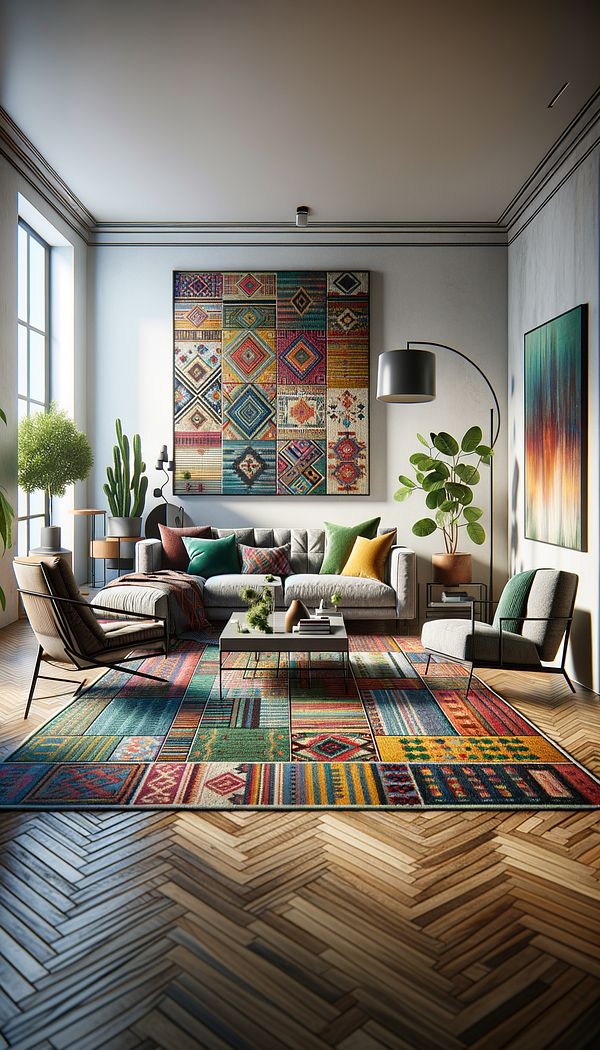What is Kilim?
Kilim refers to a flat tapestry-woven carpet or rug traditionally produced in countries of the former Persian Empire, Eastern Europe, and the Balkans.
Description
Kilims are distinctive in both their technique and style, characterized by their lack of pile, or the vertical fibers commonly found in other types of carpets. Instead, kilims are created through a meticulous process of tightly interweaving the warp (longitudinal strands) and weft (lateral strands) threads, resulting in a flat surface. This technique not only gives kilims their unique texture but also allows for intricate patterns and designs to be woven directly into the fabric.
The patterns and motifs on kilims are more than just decorative; they often carry symbolic meaning, with each region developing its own traditional designs that may signify aspects of the weaver’s cultural identity, beliefs, and wishes for the recipient. This heritage of storytelling through patterns makes kilims a rich subject of study for ethnographers and interior designers alike.
In modern interiors, kilims are valued for their versatility, durability, and the touch of cultural history they bring to spaces. They can serve as area rugs, wall hangings, or even as upholstery fabric for furniture, blending seamlessly with both contemporary and traditional decor.
Usage
In contemporary home decor, a kilim may be used as a vibrant area rug in a living room, bringing both color and pattern into the space. It can also serve as a striking wall hanging that adds texture and visual interest to a room. In more eclectic or bohemian settings, kilims might be repurposed as covers for cushions, sofas, or even used to upholster benches, adding a global flair to the interior.
FAQs
-
Are kilims only used for floor coverings?
No, kilims can be utilized in a variety of ways including as area rugs, wall decorations, throw pillows, and upholstery fabric, showcasing their versatility in interior design.
-
Can kilim rugs be placed in any room?
Yes, kilim rugs can be incorporated into virtually any room, from living rooms and bedrooms to kitchens and bathrooms, depending on personal style and the durability of the specific kilim.
-
How do I care for a kilim rug?
Caring for a kilim rug involves regular vacuuming, avoiding prolonged exposure to direct sunlight to prevent fading, and professional cleaning when necessary to preserve its quality and appearance.
Practical Application
When incorporating a kilim into your interior, consider the color scheme and patterns existing in your space to ensure it complements your decor. Remember, kilims are not only functional pieces but artifacts with cultural significance and history, so place them where they can be appreciated for both their aesthetics and heritage. Hanging a kilim on the wall or using it as a throw on furniture can also introduce texture and warmth to your space without overwhelming it.
-
Decorative Objects240 articles
-
Textile Techniques10 articles
-
Color & Patterns154 articles
-
Textiles & Upholstery252 articles
-
Flooring & Carpets48 articles
-
Complementary ColorsComplementary colors are pairs of colors that, when combined, cancel each other out to produce a grayscale color like white or black.
-
Muted ColorsMuted colors are hues that have been dulled or desaturated.
-
RécamierA Récamier is a type of chaise longue featuring a high, curved headrest and a lower footrest without a backrest.
-
LuminanceLuminance is the intensity of light emitted from a surface per unit area.
-
CertosinaCertosina is an intricate decorative technique involving the use of contrasting materials.
